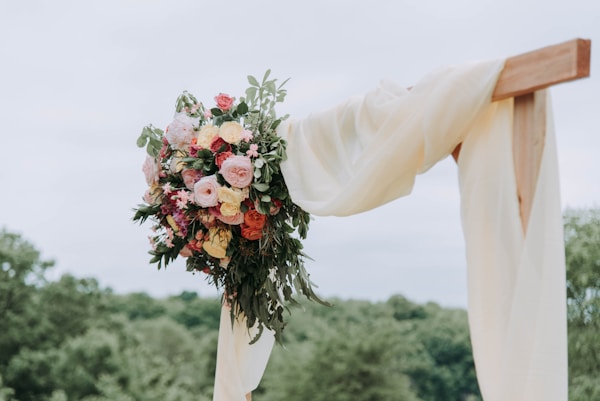Essential Methods to Reinforce Delicate Seams on a Wedding Dress
Introduction
When it comes to crafting a beautiful wedding dress, ensuring that all elements, especially the seams, are perfectly reinforced is essential. Delicate seams demand special attention not only to maintain the aesthetic appeal of the garment but also to ensure that it withstands the joys and rigors of a wedding day. In this article, we will explore effective methods used to reinforce delicate seams on a wedding dress, ensuring both durability and elegance.
Understanding Delicate Seams
Delicate seams are often found in various areas of Wedding dresses, particularly in the bodice, sleeves, and intricate lace overlays. These seams can be vulnerable to wear and tear due to the movement and activities that occur during a wedding day. Understanding the characteristics and functions of these seams is crucial for determining the best reinforcement methods.
Types of Delicate Seams
Different types of seams require different reinforcement techniques. Here are some common types:
- French Seams: Ideal for lightweight fabrics, these seams hide the raw edges and provide a neat finish.
- Flat-Felled Seams: Known for their durability, these seams are perfect for heavier fabrics and can provide added strength.
- Bias Seams: Often used in conjunction with lace, these seams stretch and can be intricate, requiring special attention.
Methods to Reinforce Delicate Seams
To ensure that delicate seams are well-supported, several methods can be employed. Here are some of the most effective techniques:
1. Interfacing
Using interfacing is one of the most common methods to strengthen delicate seams. Interfacing comes in various supports such as fusible, non-fusible, and sew-in options. The application of interfacing behind the seam can provide additional support without adding bulk to the dress.

2. Stitch Type Selection
Choosing the correct stitch type plays a critical role in reinforcing seams. For example, a narrow zigzag stitch can allow for flexibility in delicate fabrics without compromising integrity. Utilizing a straight stitch for more robust areas can also ensure strength where needed.
3. Stay Stitching
Stay stitching is preventive stitching placed just outside the seam line. This method is particularly useful in areas like necklines or armholes, where fabric might distort. By stitching one-eighth inch from the edge, you can prevent stretching and bolster the seam's overall strength.
4. Seam Tape
Seam tape, available in various materials, can be applied to seams to provide extra support and stability. This method is especially beneficial for lightweight, delicate fabrics that are prone to fraying.
5. Hand Sewing Techniques
Hand sewing can also greatly enhance the durability of seams. Techniques such as slip stitching or backstitching create tighter, more controlled seams that are often more resilient than machine-stitched seams.
Maintaining the Integrity of the Dress
Beyond seam reinforcement, maintaining the dress's integrity is vital. Here are some suggestions to keep in mind:
1. Proper Fitting
A well-fitted dress reduces stress on seams. Consider having a professional fitting to ensure all elements of the dress sit exactly as they should.
2. Regular Maintenance
Post-wedding care is crucial. Always have the dress cleaned and stored properly to prevent any wear on the seams over time.
3. Avoiding Excessive Stress
Be cautious during activities such as dancing and sitting to avoid pulling on delicate seams. Practicing movements ahead of time can help in determining how to maintain grace without compromising the seams.
| Method | Description | Best For |
| Interfacing | Strengthens seams without bulk. | Lightweight fabrics. |
| Stitch Type Selection | Choosing appropriate stitches for fabric. | All fabric types. |
| Stay Stitching | Preventive stitching to maintain shape. | Necklines and armholes. |
Common Questions About Reinforcing Wedding Dress Seams
In the quest for seam reinforcement, there are common questions that arise:
- What fabric types are hardest to work with when reinforcing seams?
Silk and chiffon can be challenging due to their delicate nature, requiring careful handling and reinforcing methods.
- How can I ensure that my alterations don’t ruin the delicate seams?
Consulting with a skilled tailor who specializes in bridal wear is essential to achieve the best results without compromising the garment.
- What are the risks of not reinforcing seams?
Without proper reinforcement, seams can easily fray or break, risking the overall appearance and structural integrity of the dress.
Conclusion
Reinforcing delicate seams on a wedding dress is crucial to ensuring that it not only looks captivating but also lasts through the wedding day’s activities. By employing methods such as interfacing, selecting the right stitch types, and incorporating hand sewing techniques, you can enhance the durability of these fragile seams. Always consider maintaining the dress regularly and consulting professionals for fittings and alterations. With the right care and reinforcement, a wedding dress can be a lasting treasure that holds all the memories of that special day.